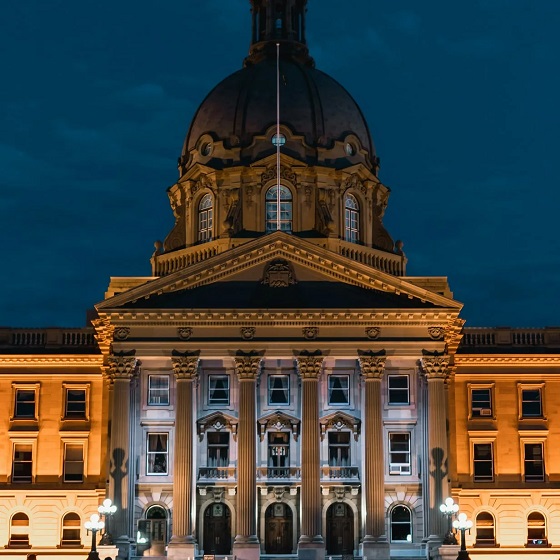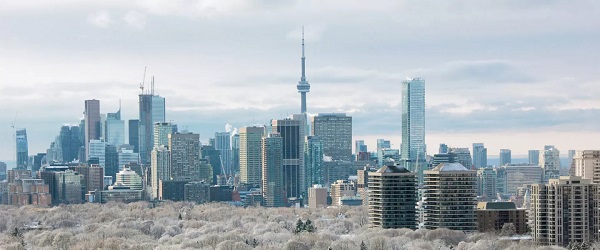Frontier Centre for Public Policy
Is the Price of Reconciliation that we Must Pretend to Believe a Lie?

From the Frontier Centre for Public Policy
Even the Kamloops band is backing away from its most extreme claim, that ‘bodies were found’
The price we are being told that we must pay to achieve “reconciliation” is becoming clear. We must pretend to believe a lie.
The lie is that 215, and then thousands, of indigenous students of residential schools were “disappeared” while at the schools — that they died under sinister circumstances while under the care of the priests, nuns and teachers running the schools, and were buried in secrecy.
To top it off, it is claimed that fellow students — “as young as six” — were forced by these evil priests to dig the graves. The fact that there is not one scintilla of good evidence to support this deeply anti-Catholic blood libel is not supposed to deter us from accepting it as fact. We are being told that we must pretend to believe this lie if we want to achieve “reconciliation”.
If there was any doubt that the Assembly of First Nations (AFN) was insisting that Canadians must pretend to believe the false claim, it was dispelled when they angrily rejected the funding cap that the federal government had placed on its ill-considered promise to provide a total of $320 million to indigenous communities that chose to go on their own “missing children/unmarked graves” search.
The chiefs showed who was boss, and the federal government meekly submitted, and cancelled the funding cap.
The government coffers were left wide open, and indigenous communities expanded existing searches for “missing children.” In reality these children were never missing. As Tom Flanagan explains in Grave Error (above), they were “forgotten children” who had been properly buried in marked graves that were subsequently left untended and forgotten by their families.
Be that as it may, as a result of AFN activism, and government and media incompetence, the Kamloops claim morphed into an officially sanctioned lie.
But where is the truth in all of this?
Most of us knew, even when this claim was first made in 2021, that these grisly tales of sinister deaths and secret burials could not possibly be true.
There is simply no historical record of any such thing occurring.
There are no records of parents frantically looking for children who suddenly went missing from residential schools, no police reports of missing children. Nothing.
In fact the extensive records we do have say exactly the opposite — namely that the deaths of children who sadly died of the diseases of the day at residential schools were all properly recorded, and that almost all of the deceased children were buried by their parents on their home reserves.
The small minority who were buried in special school cemeteries, (because the transportation of the bodies back to remote reserves was impractical,) all received Christian burials. Their places of burial were made known to their parents. The fact is that record keeping of indigenous children at residential schools was far superior to record keeping of the children on reserves, where far greater numbers died of exactly the same diseases.
But for reasons best left to future historians to ponder the Trudeau government and its CBC media ally immediately accepted the crackpot Kamloops claim as true. CBC and other gullible media went into overdrive pumping out misinformation in support of the baseless claim, while the Trudeau government ordered all flags on federal buildings across Canada lowered, where they remained for six months!
Trudeau’s indigenous affairs minister, Marc Miller — perhaps the worst Indian Affairs minister in the history of this country — recklessly promised $320 million to indigenous communities that wanted to make similar claims. And, of course, others did almost immediately.
Down the road, Chief Willie Sellars, of the Williams Lake indigenous community, outdid the rhetoric of his colleague, Chief Casimir. According to Sellars, priests had not only killed countless indigenous children, but had thrown their bodies into “rivers, streams and lakes” as well as the usual old standards of throwing bodies into school furnaces and incinerators. Other communities wanting in on the money jumped onto the bandwagon with increasingly fantastical tales.
The result of this Trudeau government recklessness — aided by a gullible media that asked no questions — was predictable. These false stories became etched in stone as the truth within the indigenous community. A victim mentality that was already deeply imbedded became pathological, as indigenous communities became convinced — on evidence that was entirely false — that they were victims of a genocide committed by their neighbours.
The chiefs also silenced the many thoughtful members within their communities who knew that these stories of murderous priests were not true. As investigative reporter, Terry Glavin, explains, even among the Tk’emlups community there were always sensible voices who did not believe those claims:
“From the outset, even among Tk’emlúps people there was a great deal of skepticism and disbelief in stories about nuns waking children in the middle of the night to bury their murdered classmates under the light of the moon”
But instead of heeding those sensible indigenous voices, and even as it became increasingly clear to Canadians that these stories were just tall tales, there was so much money in it that the chiefs doubled down. They insisted that Canadians must pretend to believe that the claims were true.
That would be their price for “reconciliation”.
As noted above, the weak Liberal government gave into this blackmail by removing the funding cap on searches it had tried to impose. But other important institutions cravenly played along with what was now an officially sanctioned lie as well.
Jon Kay explains in his recent Quillette essay how the Law Society of British Columbia is now insisting that anyone who wants to be a lawyer in that province must pretend to believe the “evil priest” line of stories.
Other law schools and law societies across Canada are doing this as well. They are so focused on what they perceive as the holy grail of “reconciliation” that they are prepared to sacrifice a pursuit of truth as their goal, and force their own students — our future lawyers and judges — to do the same.
Our public schools — to bring about “reconciliation — are indoctrinating our children with lessons about the “215 Kamloops graves” and other misinformation, such as the “Charlie Wenjack” story.
Children are taught that Wenjack was abused by Catholic priests and nuns in his residential school, and ran away as a result.
In fact, as author and historian Robert MacBain explains in his important book, “The Lonely Death Of An Ojibway Boy” Charlie Wenjack lived at a Protestant hostel run by a kindly indigenous family, attended school by the day in Kenora, and probably never saw a residential school, or met a priest or nun, in his life.
But, in the interests of “reconciliation” our children are being misinformed by their teachers.
And when a teacher does dare to tell the truth, as when B.C. teacher, Jim McMurtry told his students that the children who died in residential schools died of the diseases of the day — and were not tortured to death, as was being reported — he was frogmarched from his classroom, and summarily fired.
Or Frances Widdowson, who was fired from her tenured university position largely for daring to dispute what was becoming an increasingly extreme residential school narrative.
All of this obvious unfairness, is happening in the name of “reconciliation.” The senior lawyers who oversee the Law Society, and the educators who select our children’s school curricula are doing a great disservice to this country. As are our MPs who foolishly labelled Canada as genocidal, based on the same false Kamloops claim.
As are our senior indigenous leaders, who know by know that the murderous, secret-burying priest story has always been just a silly ghost story that children tell to scare one another. Yet they insist that Canadians must pretend to believe it, or they will withhold the “reconciliation” that they wield like a sledge hammer over our heads.
It should have occurred to everyone by now that if the price of “reconciliation” is pretending to believe a lie, the price is far too high. That kind of “reconciliation” is worth nothing.
In actual fact, what this country and its indigenous population needs is not “reconciliation” at all. Too many indigenous people are stuck at the bottom of the socioeconomic ladder. What they need is not “reconciliation” but integration into the economy, and the opportunity to participate in it. As for the opportunists who exploit a false claim to benefit themselves, they deserve only our contempt.
What nobody needs is a country where citizens must lie to each other in order to stay together.
And now, to add insult to injury, MP Leah Gazan wants to make it a law that we must all lie to each other by criminalizing what she calls “residential school denialism”. She specifically singles out the Kamloops claim as something Canadians must accept as true. As she sees it any Canadian who refuses to do so, or who dares to suggest that the positives, as well as the negatives of residential schooling should be recognized, should be made a criminal. Dostoevsky famously asked if there will come a time “when intelligent people will be banned from thinking, so as not to offend the imbeciles”. Has that time arrived?
Brian Giesbrecht, retired judge, is a Senior Fellow at the Frontier Centre for Public Policy.
Automotive
Canada’s EV Mandate Is Running On Empty

From the Frontier Centre for Public Policy
At what point does Ottawa admit its EV plan isn’t working?
Electric vehicles produce more pollution than the gas-powered cars they’re replacing.
This revelation, emerging from life-cycle and supply chain audits, exposes the false claim behind Ottawa’s more than $50 billion experiment. A Volvo study found that manufacturing an EV generates 70 per cent more emissions than building a comparable conventional vehicle because battery production is energy-intensive and often powered by coal in countries such as China. Depending on the electricity grid, it can take years or never for an EV to offset that initial carbon debt.
Prime Minister Mark Carney paused the federal electric vehicle (EV) mandate for 2026 due to public pressure and corporate failures while keeping the 2030 and 2035 targets. The mandate requires 20 per cent of new vehicles sold in 2026 to be zero-emission, rising to 60 per cent in 2030 and 100 per cent in 2035. Carney inherited this policy crisis but is reluctant to abandon it.
Industry failures and Trump tariffs forced Ottawa’s hand. Northvolt received $240 million in federal subsidies for a Quebec battery plant before filing for bankruptcy. Lion Electric burned through $100 million before announcing layoffs. Arrival, a U.K.-based electric van and bus manufacturer, collapsed entirely. Stellantis and LG Energy Solution extracted $15 billion for Windsor. Volkswagen secured $13 billion for St. Thomas.
The federal government committed more than $50 billion in subsidies and tax credits to prop up Canada’s EV industry. Ottawa defended these payouts as necessary to match the U.S. Inflation Reduction Act, which offers major incentives for EV and battery manufacturing. That is twice Manitoba’s annual operating budget. Every Manitoban could have had a two-year tax holiday with the public money Ottawa wasted on EVs.
Even with incentives, EVs reached only 15 per cent of new vehicle sales in 2024, far short of the mandated levels for 2026 and 2030. When federal subsidies ended in January 2025, sales collapsed to nine per cent, revealing the true level of consumer demand. Dealer lots overflowed with unsold inventory. EV sales also slowed in the U.S. and Europe in 2024, showing that cooling demand is a broader trend.
As economist Friedrich Hayek observed, “The curious task of economics is to demonstrate to men how little they really know about what they imagine they can design.” Politicians and bureaucrats cannot know what millions of Canadians know about their own needs. When federal ministers mandate which vehicles Canadians must buy and which companies deserve billions, they substitute the judgment of a few hundred officials for the collective wisdom of an entire market.
Bureaucrats draft regulations that determine the vehicles Canadians must purchase years from now, as if they can predict technology and consumer preferences better than markets.
Green ideology provided perfect cover. Invoke a climate emergency and fiscal responsibility vanishes. Question more than $50 billion in subsidies and you are labelled a climate denier. Point out the environmental costs of battery production, and you are accused of spreading misinformation.
History repeatedly teaches that central planning always fails. Soviet five-year plans, Venezuela’s resource nationalization and Britain’s industrial policy failures all show the same pattern. Every attempt to run economies from political offices ends in misallocation, waste and outcomes opposite to those promised. Concentrated political power cannot ever match the intelligence of free markets responding to real prices and constraints.
Markets collect information that no central planner can access. Prices signal scarcity and value. Profits and losses reward accuracy and punish error. When governments override these mechanisms with mandates and subsidies, they impair the information system that enables rational economic decisions.
The EV mandate forced a technological shift and failed. Billions in subsidies went to failing companies. Taxpayers absorbed losses while corporations walked away. Workers lost their jobs.
Canada needs a full repeal of the EV mandate and a retreat from PMO planners directing market decisions. The law must be struck, not paused. The contrived 2030 and 2035 targets must be abandoned.
Markets, not cabinet ministers, must determine what technologies Canadians choose.
Marco Navarro-Genie is vice-president of research at the Frontier Centre for Public Policy and co-author, with Barry Cooper, of Canada’s COVID: The Story of a Pandemic Moral Panic (2023).
Business
Is Carney Falling Into The Same Fiscal Traps As Trudeau?

From the Frontier Centre for Public Policy
By Jay Goldberg
Rosy projections, chronic deficits, and opaque budgeting. If nothing changes, Carney’s credibility could collapse under the same weight.
Carney promised a fresh start. His budget makes it look like we’re still stuck with the same old Trudeau playbook
It turns out the Trudeau government really did look at Canada’s economy through rose-coloured glasses. Is the Carney government falling into the same pattern?
New research from the Frontier Centre for Public Policy shows that federal budgets during the Trudeau years “consistently overestimated [Canada’s] fiscal health” when it came to forecasting the state of the nation’s economy and finances over the long term.
In his research, policy analyst Conrad Eder finds that, when looking specifically at projections of where the economy would be four years out, Trudeau-era budgets tended to have forecast errors of four per cent of nominal GDP, or an average of $94.4 billion.
Because budgets were so much more optimistic about long-term growth, they consistently projected that government revenue would grow at a much faster pace. The Trudeau government then made spending commitments, assuming the money would be there. And when the forecasts did not keep up, deficits simply grew.
As Eder writes, “these dramatic discrepancies illustrate how the Trudeau government’s longer-term projections consistently underestimated the persistence of fiscal challenges and overestimated its ability to improve the budgetary balance.”
Eder concludes that politics came into play and influenced how the Trudeau government framed its forecasts. Rather than focusing on the long-term health of Canada’s finances, the Trudeau government was focused on politics. But presenting overly optimistic forecasts has long-term consequences.
“When official projections consistently deviate from actual outcomes, they obscure the scope of deficits, inhibit effective fiscal planning, and mislead policymakers and the public,” Eder writes.
“This disconnect between projected and actual fiscal outcomes undermines the reliability of long-term planning tools and erodes public confidence in the government’s fiscal management.”
The public’s confidence in the Trudeau government’s fiscal management was so low, in fact, that by the end of 2024 the Liberals were polling in the high teens, behind the NDP.
The key to the Liberal Party’s electoral survival became twofold: the “elbows up” rhetoric in response to the Trump administration’s tariffs, and the choice of a new leader who seemed to have significant credibility and was disconnected from the fiscal blunders of the Trudeau years.
Mark Carney was recruited to run for the Liberal leadership as the antidote to Trudeau. His résumé as governor of the Bank of Canada during the Great Recession and his subsequent years leading the Bank of England seemed to offer Canadians the opposite of the fiscal inexperience of the Trudeau years.
These two factors together helped turn around the Liberals’ fortunes and secured the party a fourth straight mandate in April’s elections.
But now Carney has presented a budget of his own, and it too spills a lot of red ink.
This year’s deficit is projected to be a stunning $78.3 billion, and the federal deficit is expected to stay over $50 billion for at least the next four years.
The fiscal picture presented by Finance Minister François-Philippe Champagne was a bleak one.
What remains to be seen is whether the chronic politicking over long-term forecasts that plagued the Trudeau government will continue to be a feature of the Carney regime.
As bad as the deficit figures look now, one has to wonder, given Eder’s research, whether the state of Canada’s finances is even worse than Champagne’s budget lets on.
As Eder says, years of rose-coloured budgeting undermined public trust and misled both policymakers and voters. The question now is whether this approach to the federal budget continues under Carney at the helm.
Budget 2025 significantly revises the economic growth projections found in the 2024 fall economic statement for both 2025 and 2026. However, the forecasts for 2027, 2028 and 2029 were left largely unchanged.
If Eder is right, and the Liberals are overly optimistic when it comes to four-year forecasts, then the 2025 budget should worry Canadians. Why? Because the Carney government did not change the Trudeau government’s 2029 economic projections by even a fraction of a per cent.
In other words, despite the gloomy fiscal numbers found in Budget 2025, the Carney government may still be wearing the same rose-coloured budgeting glasses as the Trudeau government did, at least when it comes to long-range fiscal planning.
If the Carney government wants to have more credibility than the Trudeau government over the long term, it needs to be more transparent about how long-term economic projections are made and be clear about whether the Finance Department’s approach to forecasting has changed with the government. Otherwise, Carney’s fiscal credibility, despite his résumé, may meet the same fate as Trudeau’s.
Jay Goldberg is a fellow with the Frontier Centre for Public Policy.
-

 Focal Points2 days ago
Focal Points2 days agoPharma Bombshell: President Trump Orders Complete Childhood Vaccine Schedule Review
-

 Business23 hours ago
Business23 hours agoWhy Does Canada “Lead” the World in Funding Racist Indoctrination?
-

 Alberta2 days ago
Alberta2 days agoA Memorandum of Understanding that no Canadian can understand
-

 Automotive1 day ago
Automotive1 day agoTrump Deals Biden’s EV Dreams A Death Blow
-

 Censorship Industrial Complex2 days ago
Censorship Industrial Complex2 days agoFrances Widdowson’s Arrest Should Alarm Every Canadian
-

 Alberta2 days ago
Alberta2 days agoPremier Smith: Canadians support agreement between Alberta and Ottawa and the major economic opportunities it could unlock for the benefit of all
-

 Automotive1 day ago
Automotive1 day agoCanada’s EV Mandate Is Running On Empty
-

 Aristotle Foundation2 days ago
Aristotle Foundation2 days agoThe extreme ideology behind B.C.’s radical reconciliation agenda









